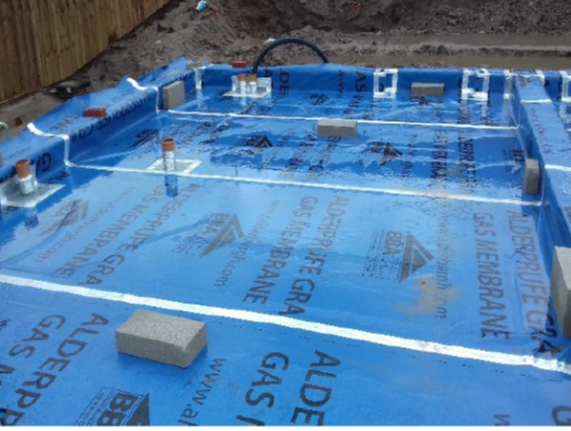The Institution of Civil Engineers (ICE) is renowned for its publications that contribute to the advancement of the civil engineering field. In this review, we will explore an ICE paper focused on piled foundations and pathways for ground gas mitigation. This paper sheds light on the important considerations and strategies for mitigating ground gas risks associated with piled foundations.
The ICE paper provides a comprehensive analysis of the challenges posed by ground gas and the effective mitigation strategies associated with piled foundations. It emphasises the importance of understanding the behaviour of ground gases and their potential impact on structures, particularly those supported by piled foundations.It is essential to highlight that ground gas risks can arise from various sources, including landfill sites, contaminated land, and natural sources such as peat. E3P would always emphasise the need to thoroughly assess ground conditions, site history, and gas generation potential to develop effective mitigation measures in accordance with BS8485 with the work to be completed by a qualified professional from E3P.
The new ICE paper extensively discusses different types of piled foundations and their susceptibility to ground gas infiltration. It provides an in-depth examination of factors influencing gas migration, such as soil permeability, gas pressure differentials, and the presence of preferential pathways. By understanding these factors, we can design appropriate measures to prevent or mitigate the potential risks associated with ground gas in accordance with industry standards.
Furthermore, the ICE paper explores various ground gas mitigation techniques, including physical barriers, ventilation systems, and active soil depressurisation. It highlights the importance of selecting the most suitable mitigation method based on site-specific conditions, considering factors such as gas type, concentration, and the presence of nearby receptors. This is an essential process in the development of the site Conceptual Model and risk based assessment in accordance with BS8485.
The ICE paper on piled foundations and pathways for ground gas mitigation is a valuable resource for engineers and professionals involved in geotechnical and environmental engineering. It provides a comprehensive overview of the challenges posed by ground gas and offers practical guidance on mitigating the associated risks in the context of piled foundations.
One of the key strengths of this paper is its emphasis on site-specific assessments. By recognising the variability of ground gas conditions and taking into account factors such as geology, hydrology, and gas sources, the authors provide a holistic approach to mitigating ground gas risks. As a result, the Institution of Civil Engineers paper effectively highlights the need to understand ground conditions to develop tailored mitigation strategies thoroughly.
Additionally, the paper’s exploration of different mitigation techniques offers engineers a range of options to consider. The discussion of physical barriers, ventilation systems, and active soil depressurisation methods provides valuable insights into the pros, cons, and applicability of each technique. This comprehensive analysis equips practitioners with the knowledge needed to make informed decisions based on site-specific conditions

